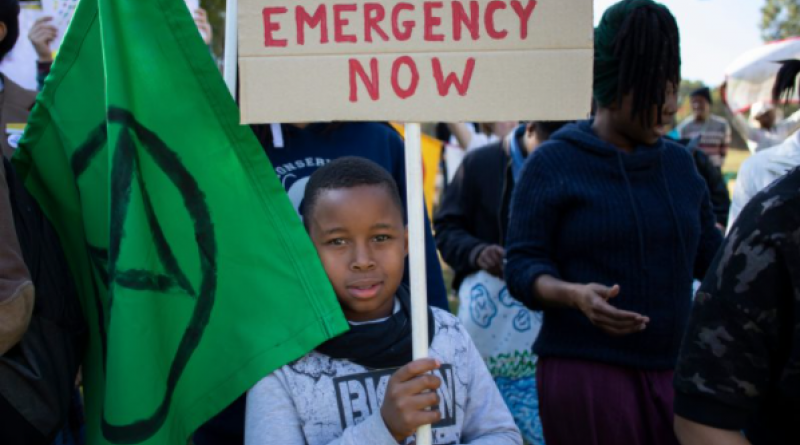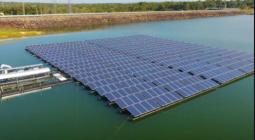Where is Sub-Saharan Africa in the race to net-zero?

African governments face more immediately pressing economic needs than zero emissions. But meeting those needs and growing the continent’s economies will depend on their energy systems evolving, argues Lily Odarno.
Lily Odarno is the director of energy, development and climate in Africa at Clean Air Task Force.
Since countries began announcing net-zero commitments, one continent has been notably silent – Africa. With the exception of Malawi and South Africa, very little has been heard from governments across the continent.
And there is good reason for this. While Africans care about climate change given the region’s vulnerability to the phenomenon; many African governments must deal with more pressing needs and immediate threats if their citizens are to live to see the climate future we aspire to.
But meeting these basic needs and growing Sub-Saharan Africa’s economies to support the aspirations of its citizens depends to a large extent on how the continent’s energy systems evolve.
‘Net-zero’ first became a buzz word following the release of the of the 2018 IPCC report which revealed that rapid and transformative action was needed to limit global temperature increase to 1.5oC at the turn of the century and avoid the catastrophic impacts of climate change.
Parties to the Paris Agreement were encouraged to adopt more ambitious commitments to support the net-zero target by 2050. Currently, 44 countries and the European Union (together representing 70% of the global economy and CO2 emissions) and some 1500 companies have pledged net zero targets.
But these pledges are still not sufficient to put us on a 1.5 oC trajectory, according to the recent report from the International Energy Agency (IEA) that charts a global energy transition compatible with climate goals.
The IEA’s Net Zero Emissions report provides an alternative to announced pledges (and current policy pathways) and defines a potential course for shifting the world to a net-zero trajectory by 2050. While this ambitious pathway is great news from a climate perspective, it raises a lot of questions and concerns in Sub-Saharan Africa
As the world attempts to navigate a net-zero transition by 2050, Africa is bracing for a huge demographic shift. More than half of the 2 billion people who will be added to the global population by 2050 will be Africans.
Urbanization is expected to proceed at an unprecedented pace in the region with over half a billion people becoming part of Africa’s urban population by 2040. These demographic and population shifts will have significant implications for energy demand for transport, industry and cooling.
This is compounded by the need to bring electricity access to close to 600 million sub-Saharan Africans by 2030, not forgetting the urgent need to shift cooking behaviours from reliance on inefficient biomass.
Sub-Saharan Africa is home to 33 of the 47 least developing countries in the world. It has an average per capita CO2 emissions of 0.8t CO2, ten times less than the average of 8t CO2 in advanced economies. Chad, Burundi, Niger, Sierra Leone, Somalia, Ethiopia, Malawi, Rwanda and Uganda have even lower per capita emissions ranging from 0 – 0.1t CO2.
From the African perspective, the question is not whether a global net-zero emissions pathway is possible given present and future technological advancements. Rather, it is how the poorest and soon-to-be most populous region in the world will lift its people out of poverty and navigate a net-zero transition simultaneously.
The IEA recognizes that the energy transition must be inclusive. Under its net-zero pathway, universal electricity access is achieved by 2030, through a combination of mini-grids, standalone systems and centrally dispatched grids.
Fuel switching and access to improved technologies, bring access to clean cooking for all by 2030. However, these projections seem extremely hopeful. The evidence of current trends shows that we are headed in the opposite direction.
By 2030, there could be 620 million people without access to electricity; 85% of them will be Sub-Saharan Africans. In the cooking space, population growth continues to outstrip progress in expanding access to cleaner options.
Radical action is needed to change our course. Financial commitments for electrification in Sub-Saharan African countries remain low, with some countries reporting declines.
Policy frameworks for off-grid technologies have seen some progress, but policies for grid electrification continue to lag behind in most Sub-Saharan African countries with acute electricity access gaps. This must change.
With the IEA advocating for a big push in electrification, Sub-Saharan Africa will need significant investments to build new grid infrastructure and invest in efficient technologies and supporting infrastructure in transportation and other sectors, to support the scale of this transition.
One could argue that Sub-Saharan Africa can benefit from technological leapfrogging and financial support from advanced economies, as some countries did with the advent of mobile and internet technology. But history has taught us Africa cannot depend on international support to develop a sustainable energy future or lift its people out of poverty.
The simple truth is that wealthier countries are better able to invest in cleaning up their energy systems. A more prosperous Africa will be better placed to build a sustainable energy future that will benefit its people and the climate.
The challenge of the net-zero framework calls for a fresh approach to rethinking the global energy transition; one that places the human development needs of countries in Sub-Saharan Africa at the heart of the climate debate.
A one-size-fits-all approaches to the energy transition will not be beneficial to the sub-region or to the world.
And while a shift from fossil fuels is needed on global levels, Sub-Saharan Africa will need time to develop realistic pathways towards such a transition; one that takes the unique resource endowments and growth aspirations of low income countries into account.
A just transition is not driven by rhetoric—it requires deep commitment and difficult decisions. It may demand that advanced countries lay down more than they would otherwise want to, so that others can also have the space to grow and have decent lives.
This realization should be the foundation of the journey towards net-zero.
7 June 2021
Euractiv




